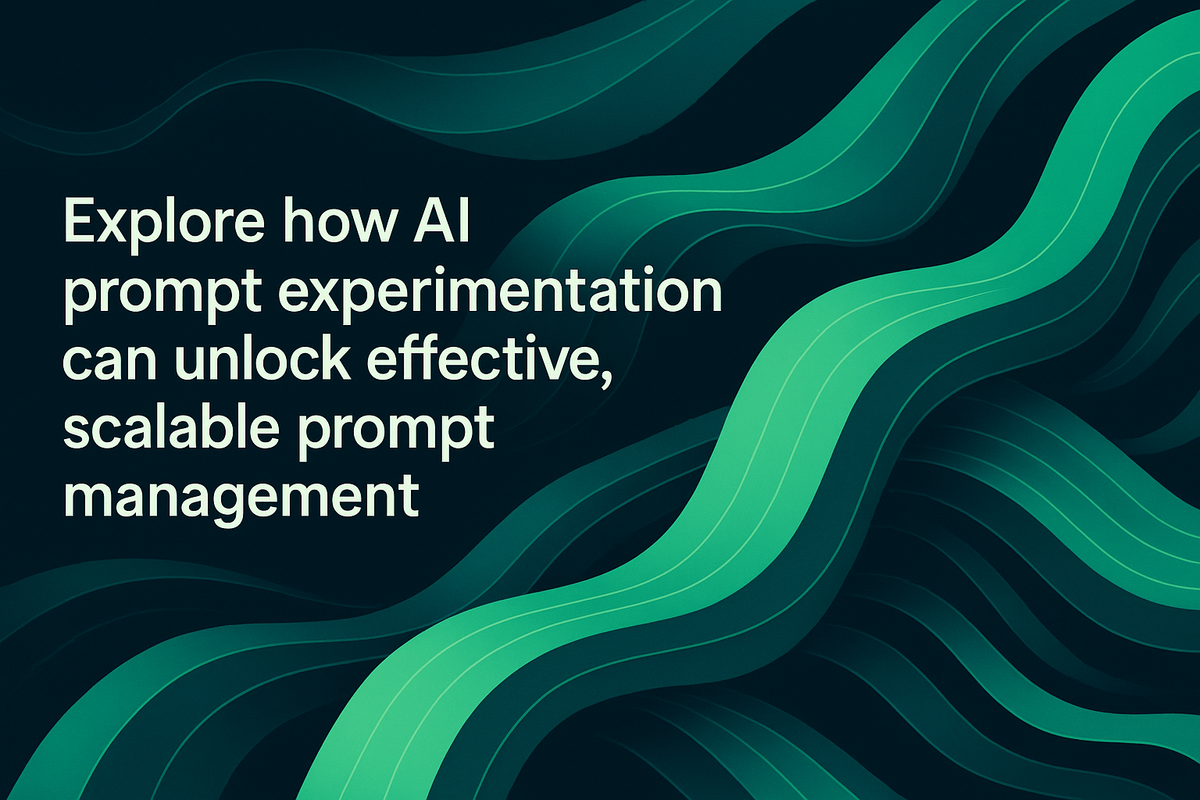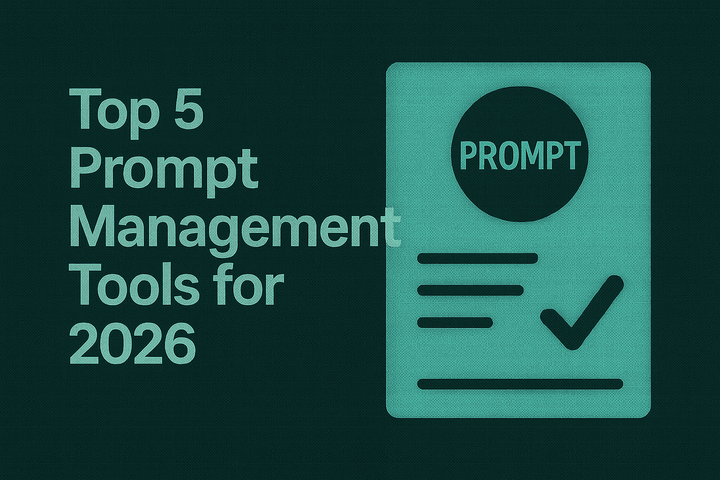Explore how AI prompt experimentation can unlock effective, scalable prompt management

TL;DR
Prompt experimentation turns prompt designing into an engineering discipline: Define hypotheses, execute controlled experiments across models and parameters, assess performance using quantitative and human‑in‑the‑loop metrics, and version and deploy the best‑performing configuration.. With Maxim AI, teams centralize prompt management, automate evals in pre-release and production, and trace agent behavior end-to-end unlocking scalable workflows for RAG, chatbots, and voice agents.
Introduction
Effective prompt management requires repeatable experimentation. Teams need to compare outputs, track cost/latency, ensure reliability, and ship changes. Maxim AI provides end‑to‑end capabilities prompt versioning, experiment orchestration, agent simulation, offline/online evals, and observability to handle prompt engineering at scale. See the product overviews for experimentation, simulation and evaluation, and agent observability to ground the workflow in real features.
Why prompt experimentation is the foundation of scalable prompt management
The same prompt can vary across models, temperatures, tools, or retrieved context. A rigorous experimentation loop solves this:
- Define hypotheses, variables, and success metrics; centralize prompts with version control, folders, and tags. Use prompt versioning, folders and tags, and prompt sessions to keep lineage and collaboration intact.
- Run controlled tests across models and parameters; compare output quality, cost, and latency. Maxim’s experimentation product enables side‑by‑side comparisons and deployment strategies without code changes.
- Measure quality with multi‑layered evaluators—LLM‑as‑judge, statistical metrics, and programmatic checks—then add human review for edge cases. Explore pre‑built evaluators, human annotation, and prompt evaluations.
- Ship the best-performing version to production and monitor drift with automated evaluations and tracing. Determine the top performer using online A/B tests; supplement with human review of logs. Configure alerts and notifications to catch regressions in-flight.
A practical workflow: from prompt idea to safe deployment with Maxim
1) Structure prompts for experimentation
Start in the UI or SDK with consistent templates, variables, and partials:
- Create and organize prompts quickly in the UI with the quickstart and prompt playground. Integrate tool calls and MCP‑based tools when needed.
- Modularize with prompt partials; keep reusable sections for instructions, safety, or formatting. See UI prompt partials and library prompt partials.
- Connect retrieval to test RAG behavior under different context windows and ranking strategies. Use prompt retrieval docs and tracing retrieval to verify context flow.
2) Design experiments and datasets
Robust experiments require representative datasets and clear metrics:
- Import or curate multi‑modal datasets; create splits for regression tests. See import or create datasets, curate datasets, and manage datasets.
- Build test suites per scenario (FAQ, transactional, complex reasoning) and label expected outcomes. The library overview and concepts provide the data model for reuse and governance.
3) Evaluate with layered metrics
Combine scoring, signals, and judgment to evals:
- Use AI evaluators like faithfulness, context precision/recall/relevance, clarity/conciseness, and task success for agent workflows. Browse pre‑built evaluators and clarity, conciseness, faithfulness.
- Apply statistical metrics for text similarity and correctness: BLEU, ROUGE, F1, precision/recall, semantic similarity. See BLEU, ROUGE1, RougeL, F1‑score, precision, recall, semantic similarity.
- Add programmatic validators for compliance and correctness (PII detection, SQL validity, URL/email/UUID checks). Explore PII detection and programmatic evaluators (contains valid URL, SQL correctness).
- Configure human evaluation for nuanced quality at promotion gates. Reference human annotation and prompt evaluations.
4) Simulate real conversations to debug agent behavior
Static tests miss trajectory failures. Simulate multi‑turn interactions and measure at each step:
- Use text simulation to run conversations across personas and scenarios; analyze trajectories and step‑level outcomes.
- Reproduce issues from any step and rerun with fixes to verify impact before production. The agent simulation and evaluation product page outlines these debugging loops.
5) Ship safely with observability and online evals
Production quality requires continuous monitoring:
- Instrument traces, spans, generations, tool calls, and retrieval; tag sessions and attach artifacts.
- Set automated online evaluations and human review on logs; configure alerts for thresholds or anomalies.
- Use dashboards, exports, and reporting to share trends and regressions across teams. Reference dashboard, exports, and reporting.
How Maxim AI manages prompt management end‑to‑end
Maxim provides a full‑stack path from idea to production:
- Experimentation: Organize and version prompts, compare across models/parameters, and deploy prompt variants without code changes.
- Simulation: Evaluate agent trajectories and task success across personas; rerun from any step to reproduce issues and validate fixes.
- Evaluation: Run unified machine and human evals across test suites; visualize runs and quantify improvements.
- Observability: Trace requests with distributed context, run online evals, and alert on quality regressions from live logs.
This lifecycle reduces risk and speeds delivery for chatbots, copilots, RAG systems, and voice agents covering ai observability, llm evaluation, agent debugging, rag evals, and prompt management.
Prompt versioning, partials, and RAG tracing
Scaling requires disciplined reuse and visibility:
- Maintain prompt lineage with versions; compare historical performance and roll back safely.
- Standardize sections with partials (e.g., safety, output JSON, retrieval instructions) to avoid drift.
- Trace RAG end‑to‑end: log retrieval queries, documents, rankings, and citations; evaluate context precision/recall and faithfulness to reduce hallucination risk. Start with tracing retrieval and evaluators like context precision, context recall, and faithfulness.
Takeaways
- Treat prompts as code: version, test, measure, and trace.
- Use layered evals: AI‑as‑judge, statistical, and programmatic, plus human review.
- Simulate trajectories to catch multi‑turn failures and verify fixes.
- Monitor in production with online evals and tracing; alert on drift.
- Unify providers and governance with Bifrost to ship reliably at scale.
Conclusion
By centralizing prompts, running controlled experiments with robust datasets, scoring with layered evaluators, simulating conversations, and instrumenting production with tracing and online evals, teams ship trustworthy AI faster. Maxim AI’s integrated platform spanning experimentation, simulation, evaluation, and observability provides the workflow and tooling to move from intuition to evidence, from edits to governed releases.
Maximize reliability and speed with Maxim AI’s end‑to‑end platform: request a demo at https://getmaxim.ai/demo or get started at https://app.getmaxim.ai/sign-up.


